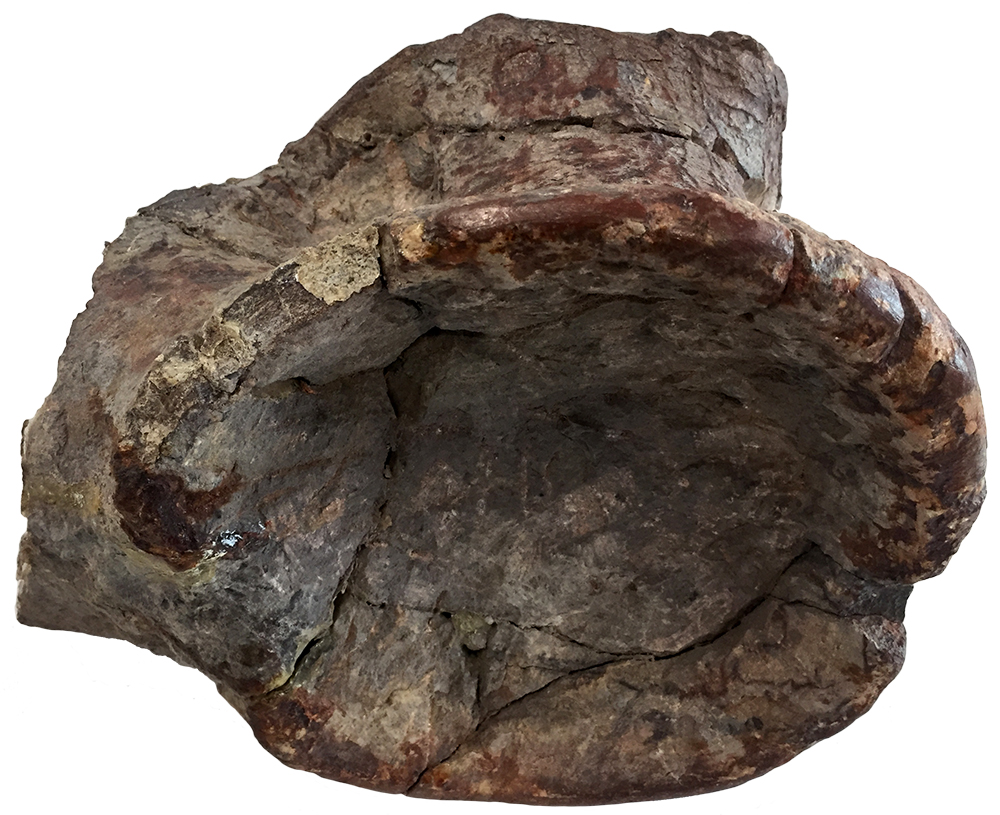
Dinosaur bones have captured people's imagination wherever they are found. Too large to be from living animals, dinosaur bones were interpreted to be the bones of ancient giants, gods, or mythic beasts. In southeast Eurasia they (along with other fossil bones) were thought to be dragon bones that had medicinal value and countless samples were ground up and consumed to help with heart, liver, or kidney issues, in calming sedatives, or as cures for dysentery and epilepsy.
This vertebra is from the Jurassic-age Morrison Formation and most likely came from a Camarasaurus, one of the most common North American sauropod dinosaurs. Camarasaurus was named in 1877 by Edward Drinker Cope during the celebrated Bone Wars rivalry he engaged in with Othniel Marsh. Cope's chosen name for the fossil, Camarasaurus, means 'chambered lizard' and refers to the hollow chambers (known as pleurocels) in its neck vertebrae which made it easier for Camarasaurus to carry the mass of its long neck. Marsh found similar fossils a short time later and instead named his find, Morosaurus, meaning 'stupid lizard'. Fortunately for sauropod dignity, Marsh's fossils were subsequently proved to come from the same form and as Cope's name was published earlier, it is the accepted genus name.